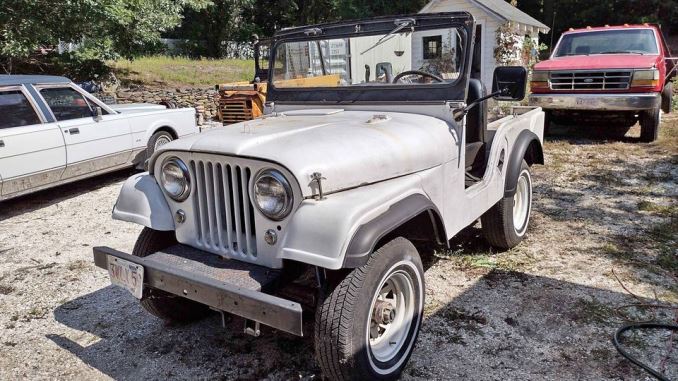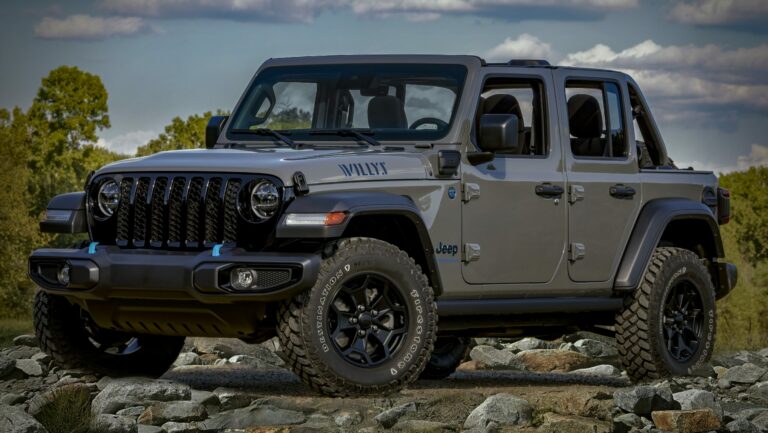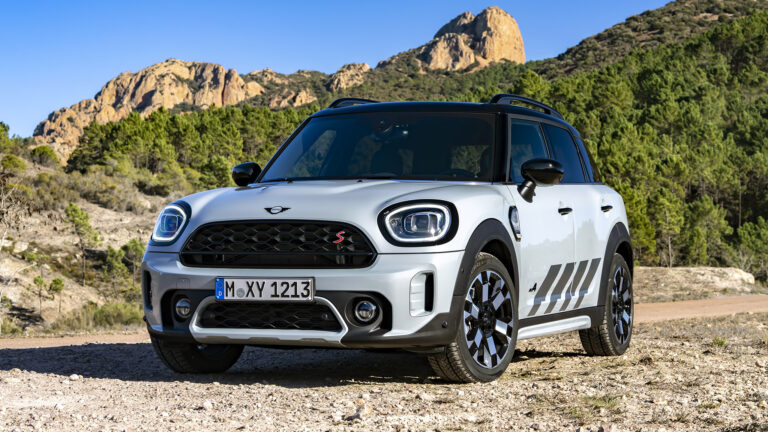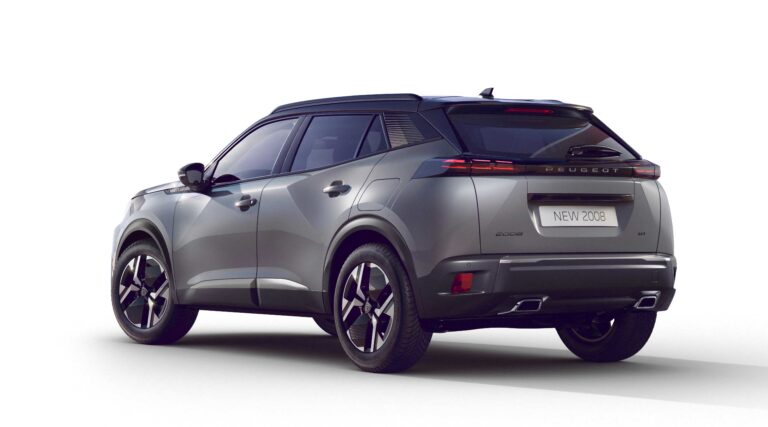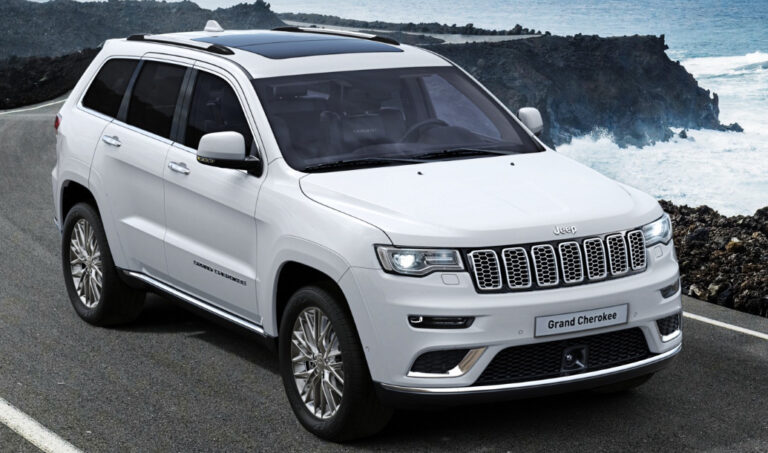1994 Jeep Sahara For Sale: Your Guide to Owning an Off-Road Icon
1994 Jeep Sahara For Sale: Your Guide to Owning an Off-Road Icon jeeps.truckstrend.com
Introduction: The Timeless Allure of the 1994 Jeep Sahara
In the annals of automotive history, few vehicles command the same nostalgic reverence and enduring appeal as the Jeep Wrangler. Within this legendary lineage, the 1994 Jeep Sahara, part of the YJ generation, stands out as a true icon. More than just a utilitarian 4×4, the Sahara trim of the YJ era represents a unique blend of rugged capability and a touch of distinctive style. For many enthusiasts, it’s the quintessential "classic Jeep" – instantly recognizable with its square headlights (a feature unique to the YJ), signature "Sahara Green" paint, and distinctive interior appointments.
1994 Jeep Sahara For Sale: Your Guide to Owning an Off-Road Icon
The prospect of a "1994 Jeep Sahara For Sale" isn’t just about acquiring a vehicle; it’s about investing in a piece of American automotive heritage, a ticket to open-air adventures, and a robust platform ready for anything from daily commutes to challenging off-road trails. This article serves as your comprehensive guide, delving into what makes this particular Jeep so special, what to look for when considering a purchase, and how to ensure you make an informed decision on your journey to owning this beloved classic.
The Enduring Appeal of the YJ Sahara: A Closer Look
The YJ Wrangler, produced from 1987 to 1995, marked a significant evolution for the Jeep brand, moving from the CJ series while retaining its core off-road DNA. The 1994 model year falls squarely in the sweet spot of this generation, benefiting from several refinements. What sets the Sahara trim apart, however, is its unique package of aesthetic and functional upgrades.
Originally conceived as a more "upscale" or "adventure-ready" version, the Sahara typically featured:
- Distinctive Paint Colors: While often associated with "Sahara Green," these models also came in other unique colors, often complemented by tan or "spice" soft tops and interiors.
- Special Graphics and Badging: Unique "Sahara" decals and badges adorned the exterior.
- Upgraded Interior: This often included unique fabric patterns on the seats, more robust carpeting, map pockets, and sometimes additional creature comforts like upgraded sound systems.
- Standard Features: Many Sahara models came standard with desirable options that were optional on lower trims, such as fog lights, steel wheels (often with a unique design), and sometimes a heavy-duty suspension package.
- Powertrain Options: Most 1994 Saharas were equipped with the robust 4.0-liter inline-six (I6) engine, renowned for its torque and durability, paired with either a 5-speed manual or a 3-speed automatic transmission. A less common 2.5-liter four-cylinder was also available.

This combination of ruggedness, unique styling, and capable powertrain makes the 1994 Jeep Sahara a highly sought-after vehicle for collectors, off-road enthusiasts, and anyone looking for a fun, distinctive ride.
What to Look For When Buying a 1994 Jeep Sahara
Acquiring a nearly 30-year-old vehicle, especially one designed for off-road use, requires a thorough inspection. Here’s a detailed checklist to guide your search for a 1994 Jeep Sahara For Sale:
1. Body and Frame Inspection: The Rust Battleground
This is arguably the most critical area. YJ Wranglers are notorious for rust, particularly in areas exposed to road salt or moisture.
- Frame: Inspect the frame rails meticulously, especially near the suspension mounts, skid plates, and the rear cross member. Look for significant flaking, perforations, or repairs.
- Body Mounts: Check the body mounts where the tub meets the frame. Rust here can compromise structural integrity.
- Floorboards: Lift the carpet and inspect the front and rear floorboards for rust, especially near the drain plugs.
- Fenders and Rocker Panels: These areas are prone to rust, particularly behind the front wheels and along the bottom edges of the body.
- Windshield Frame: Check for rust around the windshield hinges and the frame itself, as this can lead to leaks.
- Cowl Area: Inspect the cowl panel below the windshield for rust, which can be a difficult and costly repair.
2. Mechanical Checklist: Power and Drivetrain Reliability
- Engine (4.0L I6 is King): The 4.0L I6 is generally bulletproof, but check for oil leaks (rear main seal is common), excessive smoke from the exhaust, and unusual noises. Ensure it starts easily and idles smoothly.
- Transmission:
- Manual (AX-15): Check for smooth shifts, no grinding, and a clutch that engages without slipping.
- Automatic (TF-999/TF-904): Ensure smooth shifts, no harsh engagement, and proper fluid levels (check for burnt smell).
- Transfer Case (NP231): Engage 4-High and 4-Low. Ensure it shifts smoothly and the 4×4 light illuminates. Listen for grinding noises.
- Axles and Differentials: Look for leaks around the differential covers and axle seals. Listen for humming or clunking noises during a test drive, which could indicate worn gears or bearings.
- Suspension: Inspect leaf springs for cracks or sagging, shocks for leaks, and bushings for wear. A well-maintained suspension will ride better and handle safely.
- Brakes: Check for even pad wear, fluid leaks, and a firm pedal feel. Ensure the parking brake works.
- Steering: Look for excessive play in the steering wheel, which could indicate worn steering box, tie rods, or ball joints.
3. Interior and Electrical: Comfort and Functionality
- Seats: Check for tears, rips, and cushion condition. Original Sahara seats are a bonus.
- Dashboard and Gauges: Ensure all gauges work (speedometer, tachometer, fuel, temperature, oil pressure, voltmeter). Check for warning lights.
- HVAC: Test the heater and air conditioning (if equipped).
- Soft Top/Hard Top: If a soft top, check for tears, faded windows, and proper zipper/snap function. If a hard top, look for cracks or damage. Ensure the seals are intact to prevent leaks.
- Electricals: Test all lights (headlights, tail lights, turn signals, brake lights), wipers, radio, and power windows (if equipped).
4. Documentation and History: The Paper Trail
- Service Records: A well-documented history of maintenance is a huge plus.
- Ensure the title is clear and matches the VIN on the vehicle.
- Accident History: Ask about any past accidents or major repairs. A CarFax or similar report can be beneficial, though older vehicles may have less comprehensive digital records.
Ownership Experience and Potential Challenges
Owning a 1994 Jeep Sahara is a unique experience. Here’s what to expect:
- Maintenance Considerations: While the 4.0L engine is incredibly robust, regular maintenance is key. Parts are generally abundant and affordable due to the YJ’s popularity. Many repairs can be tackled by a DIY enthusiast.
- Fuel Economy: Be realistic. A YJ Wrangler is not known for its fuel efficiency. Expect mileage in the low to mid-teens, depending on the engine, transmission, and modifications.
- Ride Quality: This is a leaf-sprung, solid-axle vehicle. The ride will be firm and can be bouncy, especially on rough roads. It’s part of the Jeep charm, but don’t expect a luxury car ride.
- Aftermarket Support: The aftermarket for YJ Wranglers is massive. You can find virtually any part, accessory, or modification imaginable, making customization and restoration projects easy.
- Weather Protection: Soft tops offer a true open-air experience but are less insulated and secure than hard tops. Leaks can be a common issue with older tops and seals.
Making the Purchase: Tips for Buyers
- Test Drive Thoroughly: Drive it at various speeds, on different road types (if possible), and engage 4×4. Listen for unusual noises, feel for vibrations, and check steering and braking.
- Get a Pre-Purchase Inspection (PPI): If you’re serious, invest in a professional mechanic (ideally one familiar with Jeeps) to perform a comprehensive inspection. This can uncover issues you might miss.
- Negotiate Wisely: Be prepared to negotiate based on the vehicle’s condition, mileage, and any identified issues. Research comparable sales in your area.
- Consider Your Use Case: Are you looking for a daily driver, a weekend trail rig, or a restoration project? This will influence what condition you’re willing to accept.
- Factor in Additional Costs: Beyond the purchase price, consider insurance, registration, potential immediate repairs, and any desired modifications.
Concluding Summary: Embrace the Adventure
The 1994 Jeep Sahara is more than just a vehicle; it’s an invitation to adventure, a testament to rugged design, and a beloved piece of automotive history. Its distinctive looks, legendary off-road capability, and robust engineering make it a highly desirable classic for a wide range of enthusiasts. While purchasing an older vehicle requires diligence and a keen eye for potential issues, the rewards of owning a well-maintained Sahara are immeasurable. From cruising with the top down on a sunny day to conquering challenging trails, the 1994 Jeep Sahara promises an authentic, engaging, and utterly fun driving experience that few modern vehicles can replicate. Embrace the journey, and you’ll find a loyal companion for years to come.
Price Table: 1994 Jeep Sahara For Sale – Estimated Price Guide
Please note: The price of a 1994 Jeep Sahara can vary wildly based on condition, mileage, modifications, location, and market demand. This table provides a general estimate based on current market trends for a private sale.
| Condition Category | Description (Key Factors) | Estimated Price Range (USD) |
|---|---|---|
| Project/Parts Car | Significant rust (frame, body), major mechanical issues (engine/trans rebuild), non-running or barely running. | $2,000 – $5,000 |
| Fair Condition | Runs and drives, noticeable rust (surface or minor perforation), cosmetic flaws, needs mechanical attention (minor leaks, worn suspension). | $5,000 – $9,000 |
| Good Condition | Solid frame with minimal surface rust, runs well (4.0L preferred), minor cosmetic imperfections, all major systems functional. | $9,000 – $14,000 |
| Excellent Condition | Minimal to no rust, very good original paint or quality repaint, strong running engine/drivetrain, clean interior, well-maintained. | $14,000 – $20,000+ |
| Concours/Restored | Professionally restored to original or better-than-new condition, low mileage, highly desirable specific features. | $20,000 – $35,000+ |
Factors Influencing Price:
- Engine: 4.0L I6 models command higher prices than 2.5L I4 models.
- Transmission: Manual transmissions are often preferred by enthusiasts.
- Mileage: Lower mileage generally means higher prices, assuming condition matches.
- Rust: The single biggest factor. Less rust means higher value.
- Modifications: Tasteful, functional, and professionally installed modifications can add value; poorly done or extreme mods can detract.
- Hard Top vs. Soft Top: A matching hard top often adds value.
- Maintenance Records: Comprehensive records boost confidence and value.
- Location: Market demand varies geographically.
Frequently Asked Questions (FAQ) About the 1994 Jeep Sahara
Q1: Are 1994 Jeep Saharas reliable?
A1: Yes, particularly those equipped with the 4.0L inline-six engine. This engine is legendary for its durability and longevity. However, like any 30-year-old vehicle, regular maintenance is crucial, and components like bushings, seals, and electricals will eventually need attention.
Q2: What is the biggest problem with the YJ Jeep Wrangler?
A2: Rust is by far the most significant common problem. The frame, floorboards, body mounts, and windshield frame are particularly susceptible. Thorough inspection for rust is paramount when considering a purchase.
Q3: Is the 4.0L engine better than the 2.5L in a 1994 Sahara?
A3: For most users, yes. The 4.0L I6 offers significantly more horsepower and torque, making it much better suited for highway driving, carrying passengers, and off-roading. The 2.5L I4 is adequate for light use but can feel underpowered.
Q4: Can a 1994 Jeep Sahara be a daily driver?
A4: It can, but with caveats. The ride is firm, fuel economy is poor, and it lacks modern amenities like advanced safety features or quiet interiors. For those who appreciate its ruggedness and open-air experience, it can be a charming daily driver, but it’s not for everyone.
Q5: Are parts for the 1994 Jeep Sahara hard to find?
A5: Not at all. Due to the YJ’s popularity and the robust aftermarket, parts are widely available from various manufacturers, ranging from OEM replacements to performance upgrades.
Q6: What should I expect for fuel economy?
A6: Expect around 14-18 MPG with the 4.0L engine, depending on driving style, transmission, tire size, and gearing. The 2.5L might get slightly better, but neither is economical.
Q7: What’s the difference between a Sahara and a standard YJ Wrangler?
A7: The Sahara was an upscale trim package. It typically included unique paint colors (like Sahara Green), special interior fabrics and features, fog lights, body-color fender flares, and unique badging. Mechanically, they often shared the same robust components as other YJs, but often came with desirable options as standard.
